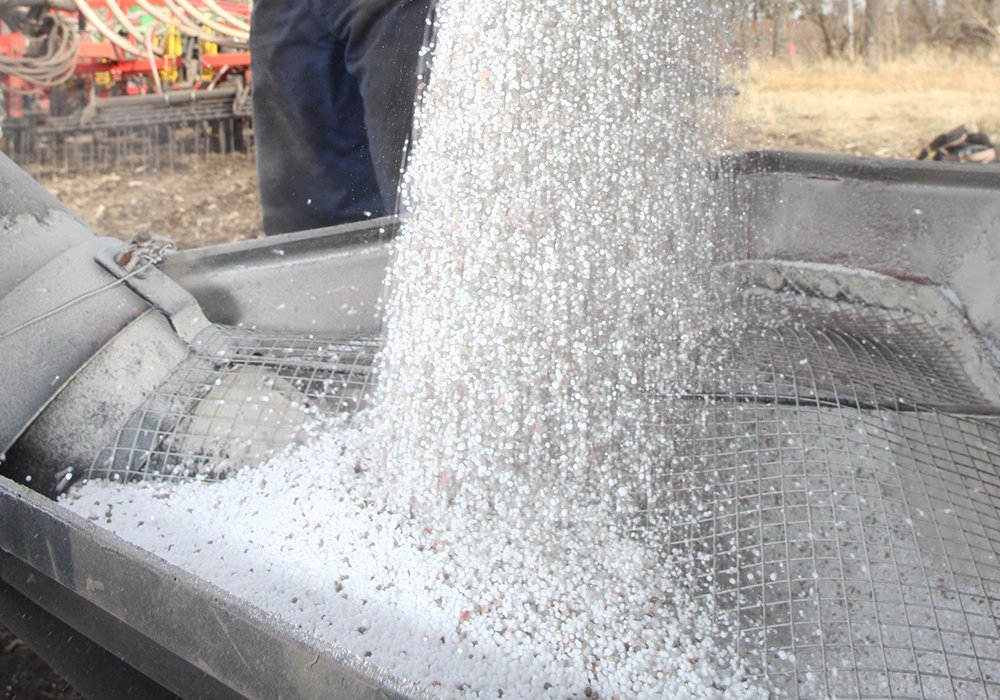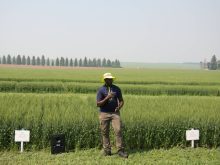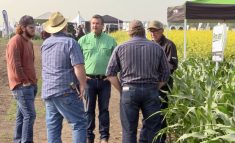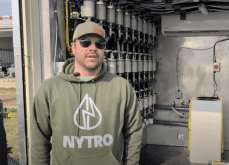In the spring of 2018, Health Canada proposed a ban on all agricultural uses of two insecticides, thiamethoxam and clothianidin.
Health Canada scientists said the insecticides, known as neonics, were accumulating in ponds, creeks and other water bodies near agricultural land. The concentrations were harmful to midges and mayflies and therefore posed a threat to birds and other animals that rely on the insects for food.
Neonics are the most commonly used insecticides in Canada, as almost all corn and canola seeds that go in the ground are coated with a neonic.
Read Also
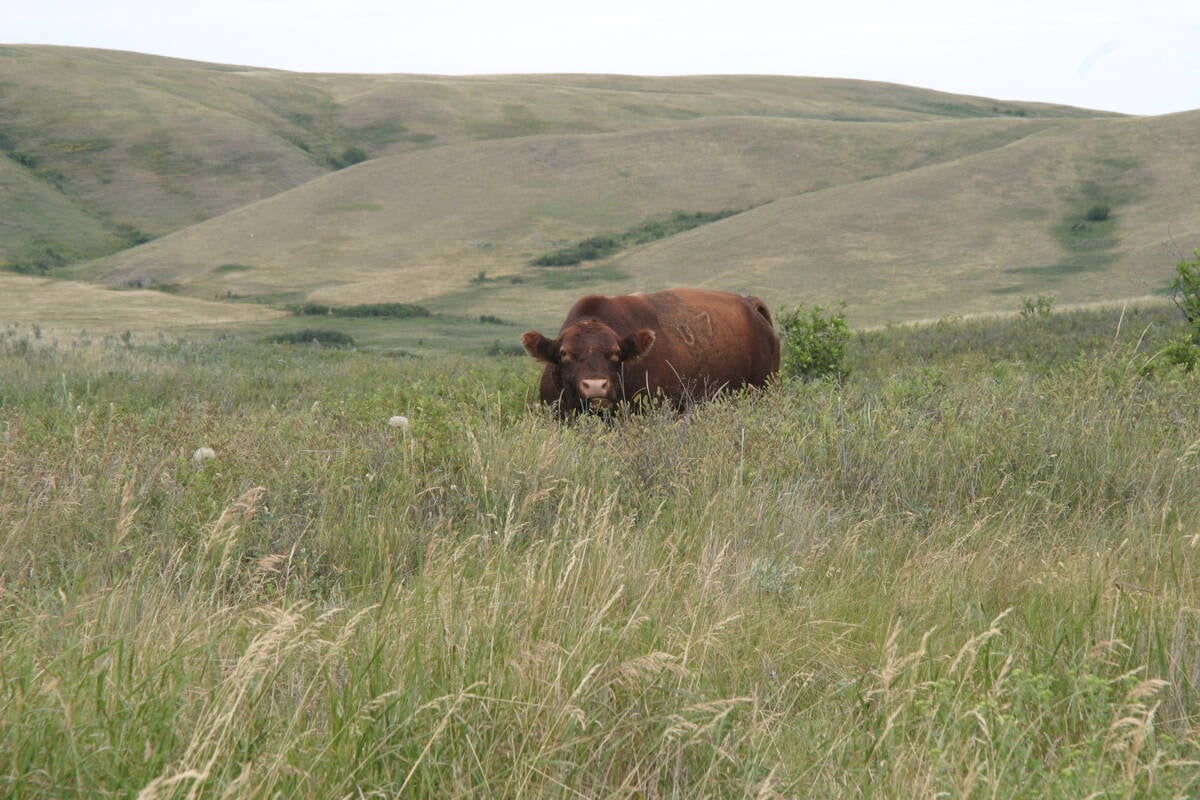
Saskatchewan puts crown land auction on hold
Auctions of Saskatchewan crown lease land are once again on hold.
It later became apparent that the data supporting Health Canada’s proposed neonic ban was weak. It had collected water samples from a small number of creeks and ponds in Ontario, which showed high levels of neonics.
The department extrapolated the results to Western Canada, possibly using the assumption that “if there are neonics in the water in Ontario, it must be a problem on the Prairies.”
In 2019 and 2020, the Canadian Canola Growers Association and Alberta Agriculture collected and analyzed water samples near canola fields in Western Canada to test the ponds, creeks and water bodies for the presence of neonics. Both groups found tiny amounts well below the threshold of risk to aquatic insects.
Using that data and other information, Health Canada reversed its neonic ban in 2021.
That recent history with neonics, where public officials took data from Ontario and assumed the insecticides were an environmental threat in Western Canada, could be relevant to the current debate over nitrous oxide emissions and nitrogen fertilizer.
N2O is a potent greenhouse gas, as one kilogram is equivalent to 300 kg of carbon dioxide released into the atmosphere.
The federal government wants farmers to achieve a 30 percent reduction in N2O emissions from nitrogen fertilizer by 2030. The plan is voluntary, but the 30 percent target has been the biggest story in Canadian agriculture in 2022.
It seems like every farm organization, ag industry group and academic has written a report on the 30 percent reduction target. Some say it’s easily achievable, others that it’s not bold enough, unnecessary, will destroy crop yields, or will eventually become mandatory for farmers.
In September, Fertilizer Canada added more words to the debate, with a 21-page response to the federal government’s fertilizer emissions plan. There are thousands of words in the document, but the most interesting nuggets are two graphs on pages seven and eight.
Page seven shows that synthetic fertilizer applied to Canadian farmland caused 11.79 million tonnes (in carbon dioxide equivalents) of N2O emissions in one year, using federal government estimates.
The data in the bar graph goes beyond national emissions. It breaks down the 11.79 million tonnes to a provincial level:
• Saskatchewan – 2.9 million tonnes (CO2 equivalents)
• Alberta – 2.35 million tonnes
• Ontario – 2.16 million tonnes
• Manitoba – 2.03 million tonnes
• Quebec – 1.7 million tonnes
When the estimated emissions from Ontario and Quebec are combined, they add up to 3.76 million tonnes. That’s about 800,000 more tonnes than the nitrous oxide emissions from fertilizer in Saskatchewan.
That’s remarkable, because Statistics Canada says Saskatchewan had 36.7 million acres of cropland in 2016. Quebec and Ontario likely had less than 10 million acres of cropland in 2016.
If hay crops are included, Saskatchewan has about 46 percent of all the field crop land in Canada. Ontario and Quebec only have 12.5 percent.
So, Ontario and Quebec have 12.5 percent of the field crop area in Canada and those provinces produce about 35 percent of the N2O emissions from fertilizer. Saskatchewan has 46 percent of the farmland and causes 25 percent of the fertilizer emissions.
The data in the page eight graph, reports the same numbers in a different way. The graphic shows the amount of emissions per kg of N applied to farmland:
• Quebec farmland emitted more than 10 kg of carbon dioxide equivalents for every kg of N applied to the land
• In Ontario, the emissions intensity was 7.5 kg of CO2 equivalents per kg of N applied
• In Saskatchewan, that number was 2.5
• Alberta was higher, at 3.4 kg per CO2 equivalents per kg of N
• Manitoba was 4.1
• The Canadian average is 4.1.
So, one kg of nitrogen applied to the average field in Ontario released three times the amount of nitrous oxide from a kg of N applied in Saskatchewan. In Quebec, one kg of N applied to farmland released four times more nitrous oxide.
Not 25 percent more or 35 percent more. Four times more.
This data shouldn’t be a surprise to policy makers in Ottawa.
In a discussion document released earlier this year, for its fertilizer emissions reduction plan, Agriculture Canada said the “drier regions of the Prairies have much lower N2O losses than the moister regions of Eastern Canada. N2O emissions per hectare are greater in Eastern Canada as a result of the wetter climate and greater N application rates.”
That leads back to the matter of neonics and the assumption that a threat to the environment in Ontario must also be a threat in Western Canada.
Health Canada eventually accepted, after years of data collection and analysis, that neonics were not a threat to aquatic insects on the Prairies.
The good news for Western Canadian farmers is that it shouldn’t take years to collect the necessary data on nitrous oxide emissions. Agriculture Canada already knows that emissions are three to four times lower (per kg of N applied) on the Prairies.
The question, though, is will politicians, policy makers and scientists accept the data and admit that nitrogen fertilizer emissions are a problem in Perth, Ont., but are a smaller concern in Kindersley, Sask.?
That acceptance doesn’t mean that prairie farmers should ignore N2O emissions. But it should be publicly noted (and promoted) that nitrogen fertilizer use on the Prairies is already more sustainable than nitrogen use in Eastern Canada.
Contact robert.arnason@producer.com


